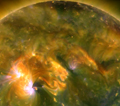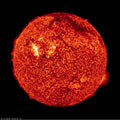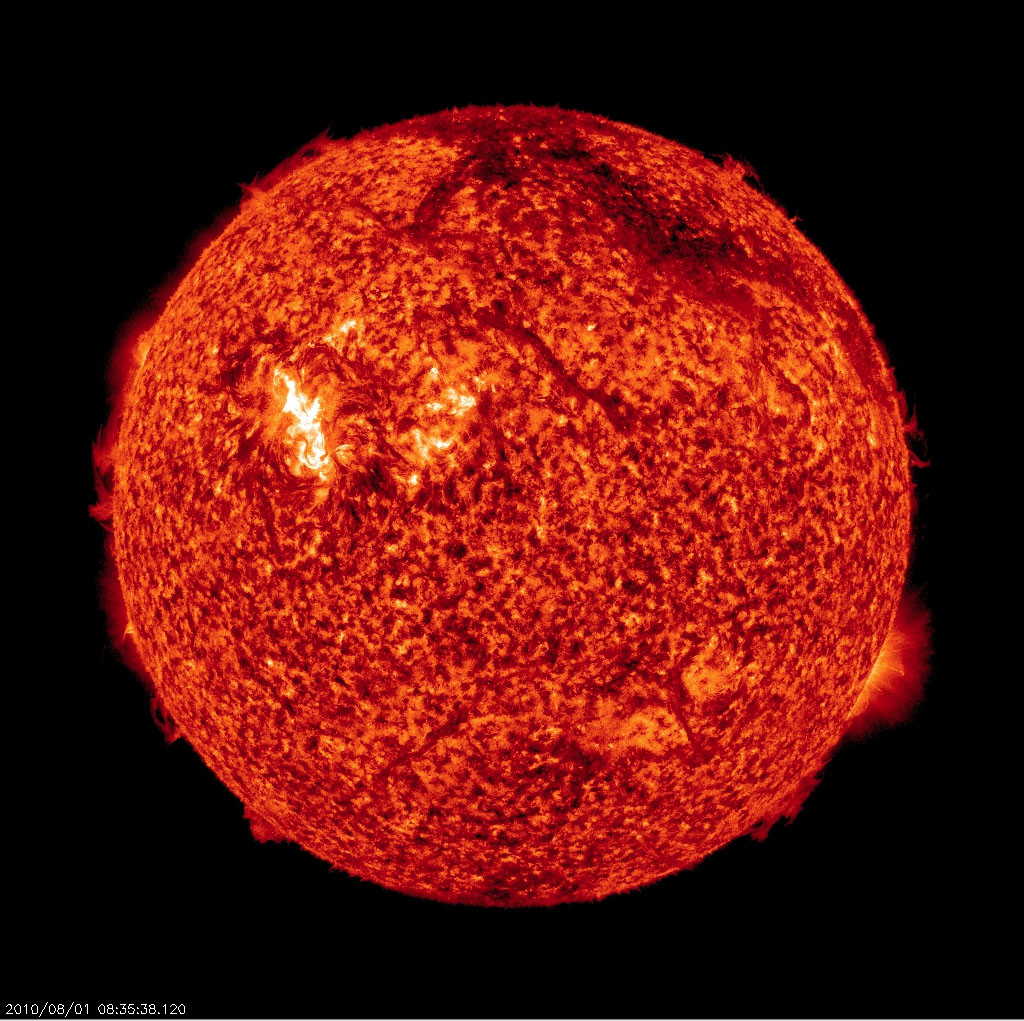Image List
-

This movie from NASA's Solar Dynamics Observatory shows a time-lapse sequence of X-ray images of the Sun taken during a 30-hour period from Sunday, August 1st through Monday, August 2nd. SDO spotted four separate coronal mass ejections, the largest of which is visible in the upper right as a dark filament of plasma erupting outward, silhouetted against the solar globe.
NASA -

This movie from NASA’s Solar Dynamics Observatory, which loops twice, shows a 3.5-hour sequence of X-ray images of the Sun taken on Sunday, August 1st. In the upper right, you can see a dark filament of plasma erupting outward, silhouetted against the solar globe. This Earth-directed eruption will reach us on the evening of August 3rd/4th, potentially triggering a brilliant display of the Northern Lights.
NASA -

NASA's Solar Dynamics Observatory snapped this X-ray photo of the Sun early in the morning of Sunday, August 1st. The dark arc near the top right edge of the image is a filament of plasma blasting off the surface - part of the coronal mass ejection. The bright region is an unassociated solar flare. When particles from the eruption reach Earth on the evening of August 3rd/4th, they may trigger a brilliant auroral display known as the Northern Lights.
NASA